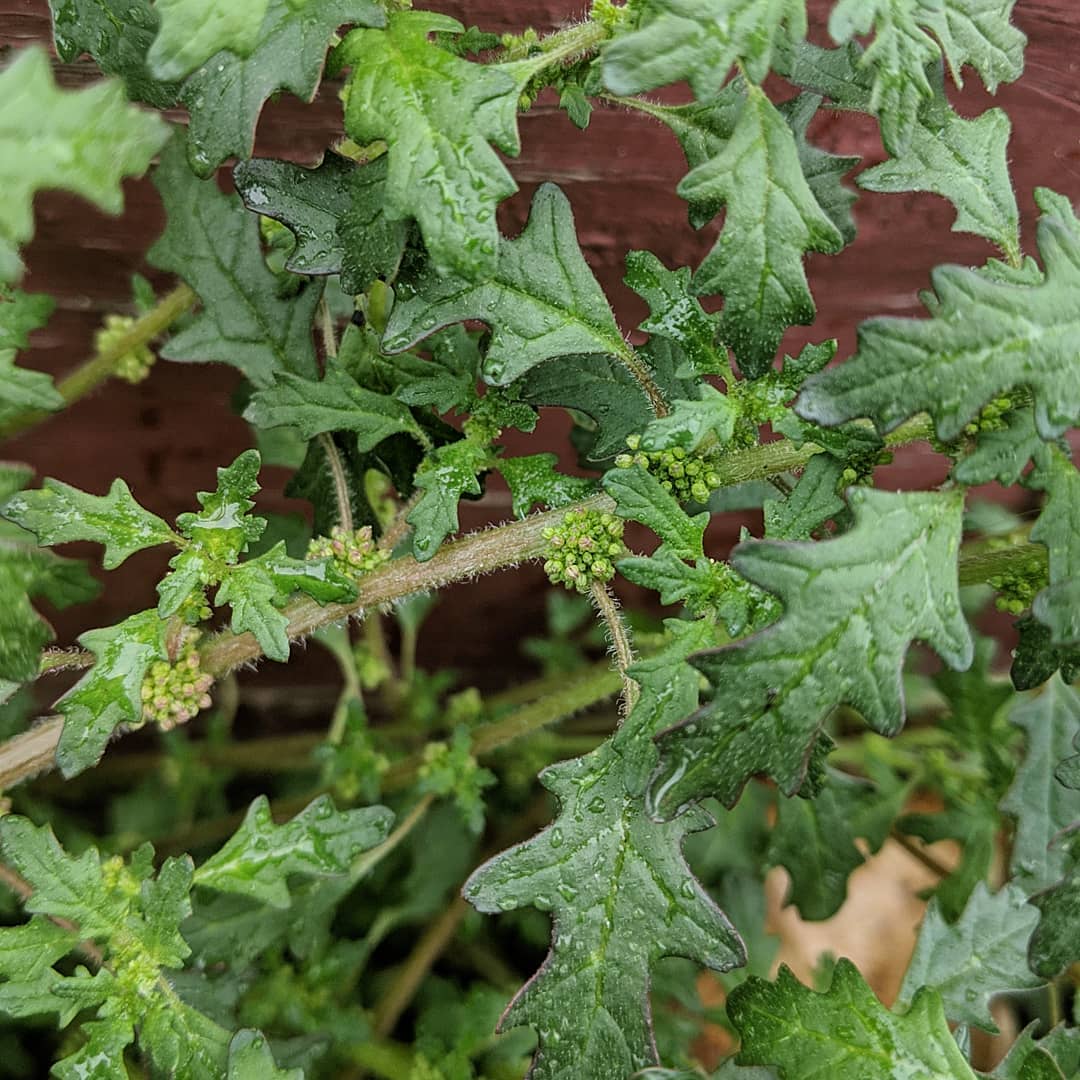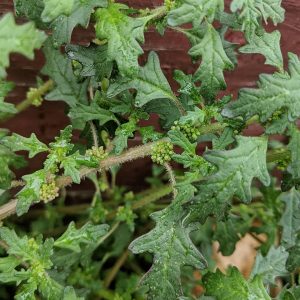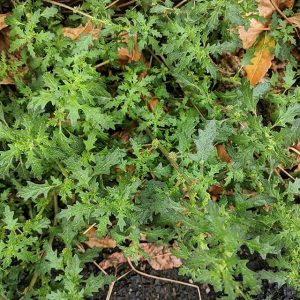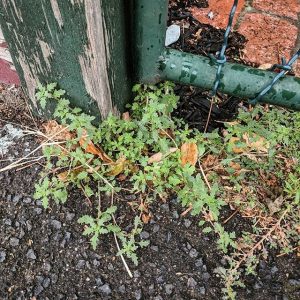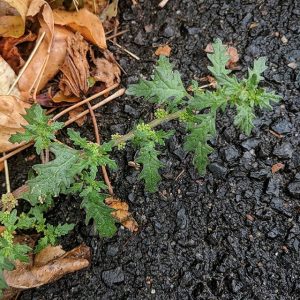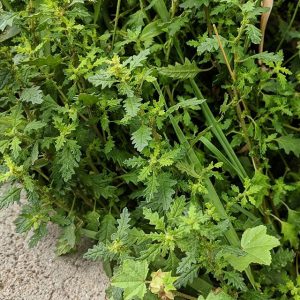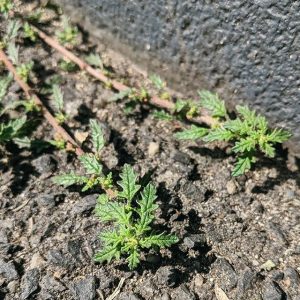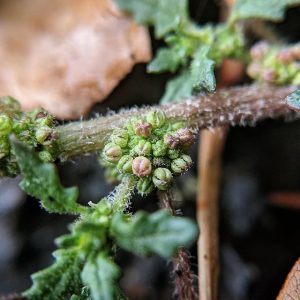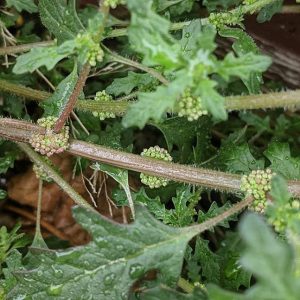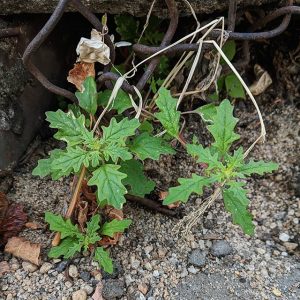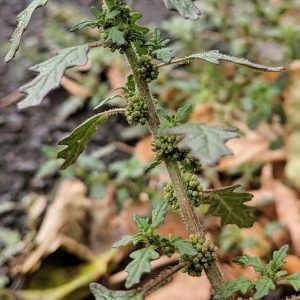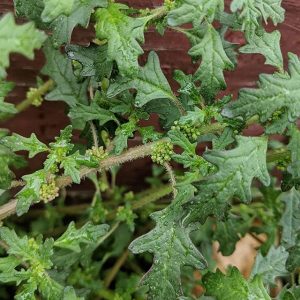Clammy Goosefoot (Dysphania pumilio or Chenopodium pumilio), a native Australian turned into cosmopolitan export now found throughout the world’s temperate regions.
In its original range on river systems like the Murray and the Snowy, Clammy Goosefoot exploits the banks of rivers and reservoirs where these are subject to periodic inundation, disturbance (by scouring etc) and drying. It also has some salt tolerance, and can be found in saline soils often subject to similar saturation and dehydration cycles. These adaptations presumably have assisted in its establishment as a colonist of metropolitan pavement cracks and that special niche at the front fence of residential gardens.
Not originally indigenous to the Melbourne area, Clammy Goosefoot was transported here from Victoria’s northern and eastern river systems as a wool contaminant, with the first metropolitan records dating to 1869, 1889 and 1899.
D. pumilio is one of several Australian species to have made the global jump as a hitchhiker on wool exports, with the first records frequently made around areas (eg. spinning mills and carding factories) where the deposit of Australian wool waste was once a regular occurrence.
View Original Post on Instagram
Search for information about Dysphania pumilio or Chenopodium pumilio in the Flora of Victoria
View information and occurrences of Dysphania pumilio or Chenopodium pumilio on the Atlas of Living Australia
